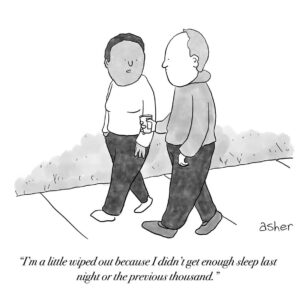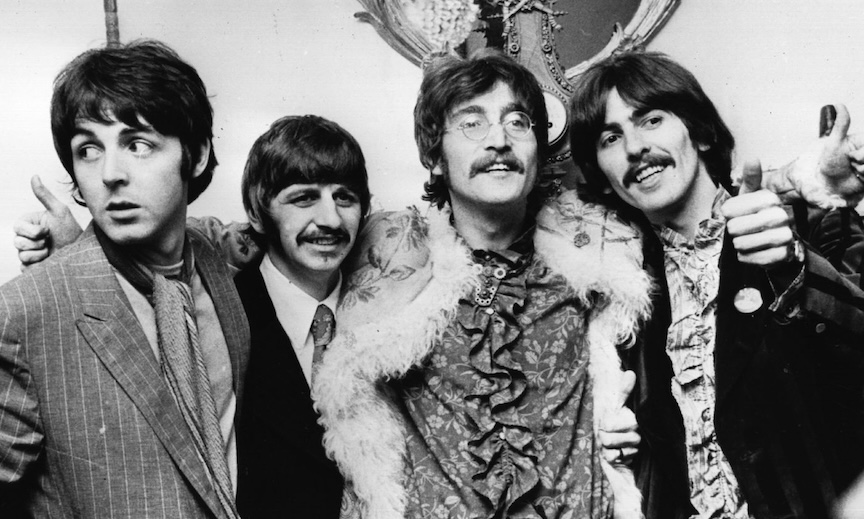SLOW UP
American composer John Cage wrote a provocative piece in the mid-1980s. It’s called “Organ 2/As Slow As Possible.” Keyboardists are challenged to take the title literally; the 8 pages of music are played very, very slowly — usually taking from 20-70 minutes. Notable public performances have included 15- and 16-hour renditions.
I can’t even imagine what that takes. The endurance, stamina, patience, control, attention, focus, surrender…? It demands of both musician and audience a way of being that seems out of sync with the rhythm of contemporary life. I find it bizarre and I’m kind of confronted by it.
When I’m unwinding in front of the television, I usually talk myself out of watching a 2-hour movie because I don’t think I have the time or patience for it (even as I am fully prepared for 4 half-hour episodes of something else). So in a weird way, the very thought of an all-day organ concert is almost troubling. It makes me antsy and anxious. A YouTuber filmed himself playing the piece over a 24-hour period, but then cut out the long holds in-between, and edited together a minute-and-a-half version of the chord changes. That’s what I listened to.
I’d never heard of “Organ 2/As Slow as Possible” until a few weeks ago when it was all over my news feeds. At St. Burchardi Church in Halberstadt, Germany, on a custom-built organ, there is an ongoing performance that began in 2001 and is scheduled to take 639 years to complete. Earlier this month, there was a chord change — the first in two years. Someone ceremoniously carried in a new pipe and inserted it into the instrument, which operates on automatic bellows that blow continuously. 639 years may not be as slow as physically possible, but it certainly takes a good stab at the idea. It’s slow enough to require lifetimes, generations, of coordinated commitment.
The whole idea pokes and challenges my relationship to time, which I’m sure is what John Cage was going for. My typical approach involves daily to-do lists, an annual calendar, five- and ten-year plans, and lifetime goals. It is based on an overarching context in which limited time might be maximized if I cram as much as possible into it. Perversely, this probably result in something like the opposite effect, psychologically and emotionally. Rather than maximizing my time, I mostly feel the lack of it. A frustrating, anxious, terrifying, constant lack of it.
And so then, cartoons like this one – from my favorite cartoonist Asher Perlman – speak to me:

We cram-cram-cram-cram-cram, then get insufficient rest, so it’s even harder to cram-cram-cram-cram-cram the next day, and so on. Our relationship to time may not be the only factor in this brutal cycle, but I think it’s probably an important component of it.
It feels like life is moving too darned fast. There’s so much to look at and do, to think about and plan for, to absorb and hopefully process at least a little before whatever deadline hollers at us (I had a typo that autocorrected to “dollars at us” — that, too) to forge ahead into the next thing. My head spins most of the time, trying to attend to everything.
Perhaps, though, what I’m calling attention isn’t really attending. One might very well call it not “attention” but “distraction.”
True attention would require me to slow down — to smell the flowers, to taste the strawberries, to listen to the chord, to feel my heartbeat and yours.
Journalist and philosopher Pico Iyer offers that “the only cure for distraction is attention.” And he is very clear that attention demands stillness. “[Stillness] not in order to enrich the mountaintop but to bring calm to the motion of the world.” To the commotion of it.
Life is happening to the beat of a gazillion different drums. A few of them might feel like an easy sync on some good days. Most of them smack us with confounding rhythms and counterpoints to which we can either adjust or against which we perpetually resist and feel out of sorts. A discomforting number of life’s drums seem inconsistent and totally arrhythmic and make me want to tear my hair out screaming, “Slow down! No! Hurry up! No! FFS!”
And in such a context, it’s very easy to spin in distraction, trying to keep with or manage the different paces and timelines of it all, simultaneously. Especially regarding the faster and faster stuff — technology, information, media, work, progress, productivity, health, aging…
But even as it might appear that like life is speeding up, plenty of it is slow. Plenty of it has always been slow. Compared to a tornado, of course, I’m not keeping up. But compared to a redwood growing in the forest, I’m racing like the devil, and that tree might tell me, “Chillax, man, you’re stressing me out.”
And here’s the thing — we don’t have to get behind this or keep up with that. We can let everything have its own rhythm, as we keep ours. I can choose where and how to give my attention. We choose where and how to attend our lives.
If I trust my own pace, and I allow myself to be in time rather than racing against it, then it’s always now. It’s always this moment, this breath, this heartbeat, these strawberries, this chord.
I can’t wait to enjoy some time with you this Sunday, February 25, 10:00am at Maple Street Dance Space. Singer-songwriter Oscar Butler will be joining us as our special musical guest. XO, Drew
©2024 Drew Groves




